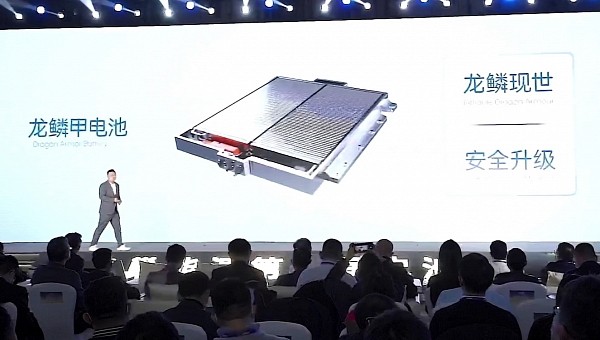Cell-to-pack (CTP) is a simple and ingenious way to increase energy density in battery packs. You just fill it with batteries instead of putting modules there. Cell-to-body (CTB) is even more radical. SVOLT decided it wanted a piece of this pie with the Dragon Armor Battery pack, which promises up to 1,000 kilometers of range with ternary cells.
The new SVOLT products follow a very similar logic to that adopted by BYD with its Blade Batteries. The Dragon Armor Battery cells are like blades, which is something conceivable with the chemistry they use: lithium iron phosphate (LFP). However, SVOLT will deliver three different chemistries.
With LFP, the battery pack should deliver around 800 kilometers (497 miles) of range, which is very random. The range in electric cars depends on so many factors that SVOLT would better state at least in which car and how big its battery car would be. On top of that, we would also need the test cycle in which it could present such results, but we bet the company followed the CLTC (China light-duty vehicle test cycle).
The intermediate chemistry improves on LFP with manganese, making these cells LMFP (lithium manganese iron phosphate), although SVOLT calls them high-manganese iron-nickel cells. However, nickel-iron cells are usually called NiFe, so we think the Chinese company’s batteries are probably something else.
These batteries can offer approximately 900 km (559 mi). Finally, the Dragon Armor Battery pack can come with ternary cells, which SVOLT claims to be able to deliver 1,000 km (621 mi). Perhaps the Chinese company should mention that LFP reaches 80% of its main battery pack range, while LMFP provides 90% of that range. Although it seems that SVOLT did not release which form factor its ternary Dragon Armor Battery cells adopt, they are probably prismatic cells. We are only sure that they are arranged in a CTC pack, which is what SVOLT calls CTB.
According to QQ, what truly makes the Dragon Armor Battery pack unique is the presence of cell blast valves at the bottom of the batteries. SVOLT claims that the location of these valves can prevent thermal runaway by allowing any cell to release pressure if it has any short circuit. It is the speed of this release that contains other cells from being affected. This cell design also saves the space that battery packs usually need to prevent any shocks in the bottom cover from hitting the batteries.
Another plus is the double-sided cooling, which improves the heat exchange capacity by 70%. It helps heat batteries up in the cold much faster and cool them while fast charging is happening. Talking about that, SVOLT said these cells could take 4C with ternary cells, meaning they can be completely charged in 15 minutes. Bold claims that new EVs may prove possible: expect the first ones with Dragon Armor Batteries by 2023.
With LFP, the battery pack should deliver around 800 kilometers (497 miles) of range, which is very random. The range in electric cars depends on so many factors that SVOLT would better state at least in which car and how big its battery car would be. On top of that, we would also need the test cycle in which it could present such results, but we bet the company followed the CLTC (China light-duty vehicle test cycle).
The intermediate chemistry improves on LFP with manganese, making these cells LMFP (lithium manganese iron phosphate), although SVOLT calls them high-manganese iron-nickel cells. However, nickel-iron cells are usually called NiFe, so we think the Chinese company’s batteries are probably something else.
These batteries can offer approximately 900 km (559 mi). Finally, the Dragon Armor Battery pack can come with ternary cells, which SVOLT claims to be able to deliver 1,000 km (621 mi). Perhaps the Chinese company should mention that LFP reaches 80% of its main battery pack range, while LMFP provides 90% of that range. Although it seems that SVOLT did not release which form factor its ternary Dragon Armor Battery cells adopt, they are probably prismatic cells. We are only sure that they are arranged in a CTC pack, which is what SVOLT calls CTB.
According to QQ, what truly makes the Dragon Armor Battery pack unique is the presence of cell blast valves at the bottom of the batteries. SVOLT claims that the location of these valves can prevent thermal runaway by allowing any cell to release pressure if it has any short circuit. It is the speed of this release that contains other cells from being affected. This cell design also saves the space that battery packs usually need to prevent any shocks in the bottom cover from hitting the batteries.
Another plus is the double-sided cooling, which improves the heat exchange capacity by 70%. It helps heat batteries up in the cold much faster and cool them while fast charging is happening. Talking about that, SVOLT said these cells could take 4C with ternary cells, meaning they can be completely charged in 15 minutes. Bold claims that new EVs may prove possible: expect the first ones with Dragon Armor Batteries by 2023.









